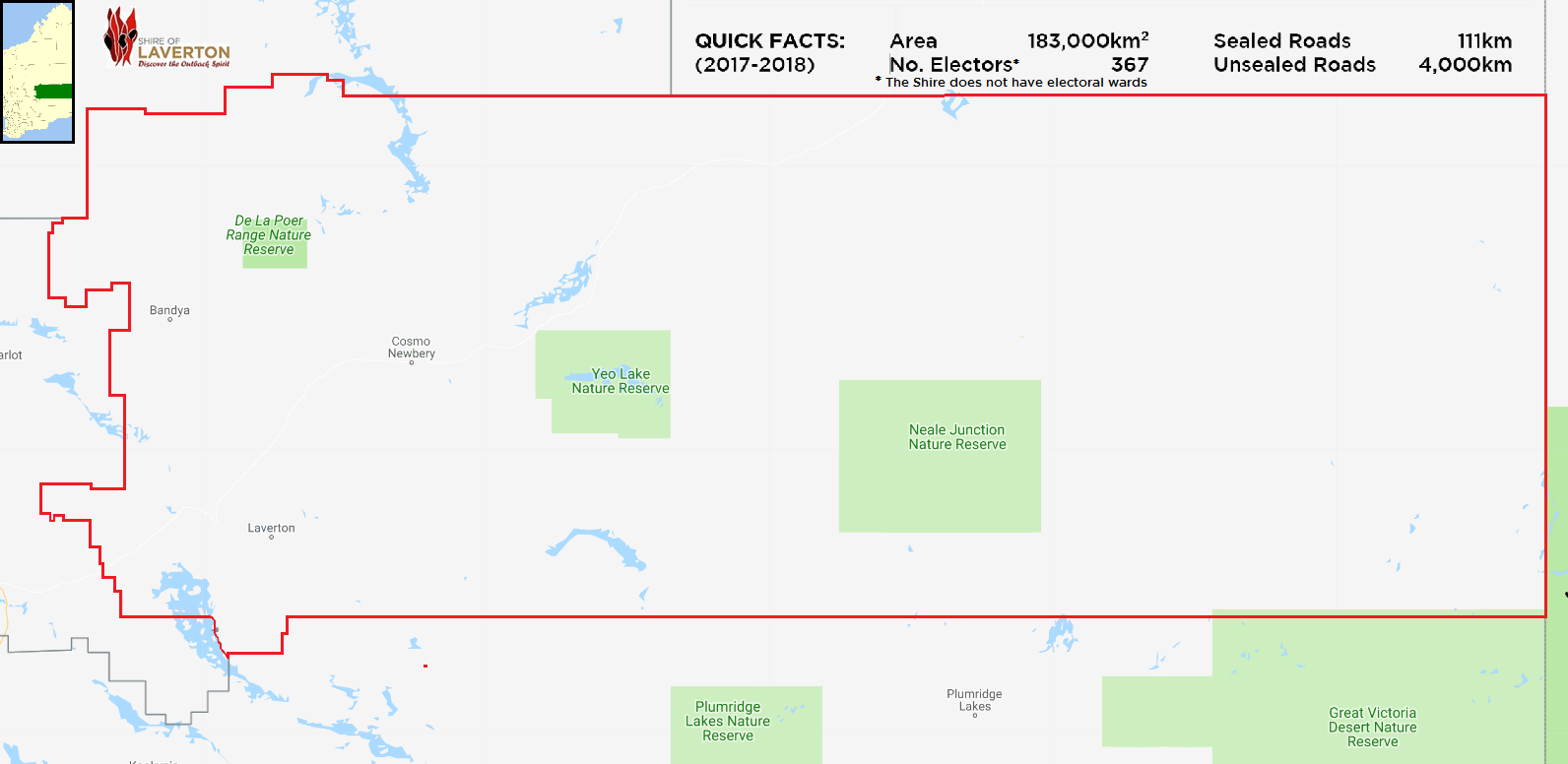Welcome to the Shire of Laverton
Discover the Outback Spirit
Nestled in the far Northern Goldfields of Western Australia, Laverton is a small town with many hidden surprises.
Covering some 183,198km2 of predominantly desert and pastoral country, Laverton has something for everyone, from spinifex plains, mulga woodlands and unique granite rock outcrops to rich Aboriginal and European history and culture.
Wongi people, collectively known as Wongutha or Wankatja people, have occupied the Laverton area for thousands of years. Their first known contact with Europeans was around 1860 when Sir John Forrest travelled through the area on an expedition to search for the remains of Ludwig Leichardt.
Many other explorers followed Forrest, including Frank Hann and David Carnegie, surviving by the teachings and knowledge of the Aboriginal people. These early explorers are recognised in the Great Beyond Visitor Centre – Home of the Explorers Hall of Fame.
During the 1880’s, sandalwood cutters travelled through the area looking for the valuable aromatic timber and their tracks opened up much of the region. In the decades since, many tonnes of sandalwood have been exported from the Laverton district.
In 1886 gold was discovered in the area – suddenly eager prospectors arrived in droves from Coolgardie, eager to strike it rich. The rapidly growing settlement was soon called British Flag after the first successful mine.
One such keen prospector was Dr Charles Laver, a British doctor who rode his bicycle from Coolgardie to the Laverton area the same year. He soon became an enthusiastic promoter of the region and travelled back to Britain a number of times to raise funds for local mining ventures, however his priority remained to attend to the sick and injured. He had an excellent rapport with his co-workers and patients and got on very well with the local Aboriginal people. Without his energy (and his capital) Laverton may well have faded away at this point.
By 1897 an informal town had sprung up to the west side of the Craiggiemore mine. This proved an unsuitable location for the permanent settlement, so an alternate site was chosen about three kilometres away. In July 1900 the new town was gazetted as Laverton, in honour of Dr Laver who had done so much to ensure the prosperity of the area.
Residents from nearby settlements such as British Flag and Euro moved to the new town and for the next 60 years it rode the rollercoaster of gold mining. However by the late 1960’s Laverton was in decline, with the very low price of gold destroying the local mining industry.
But in 1969 a prospector named Ken Shirley discovered nickel at Mt Windarra, prompting the famous Poseidon share boom. The deposit was developed into the Windarra Nickel Project which mined and processed nickel for the next 20 years and saw an influx of houses being built in Laverton.
Windarra’s closure in 1995 resulted in the town’s population falling from 2,000 people to just over 400.
Today the town is an important service centre for a range of mines that operate in the area, for the continuing pastoral industry and for the people of the western desert regions. Laverton is also an important tourism hub, acting as a true gateway to Australia’s Outback.
Although the town of Laverton is small, the Shire itself covers an extensive amount of land, as shown in the Boundary Map below:
